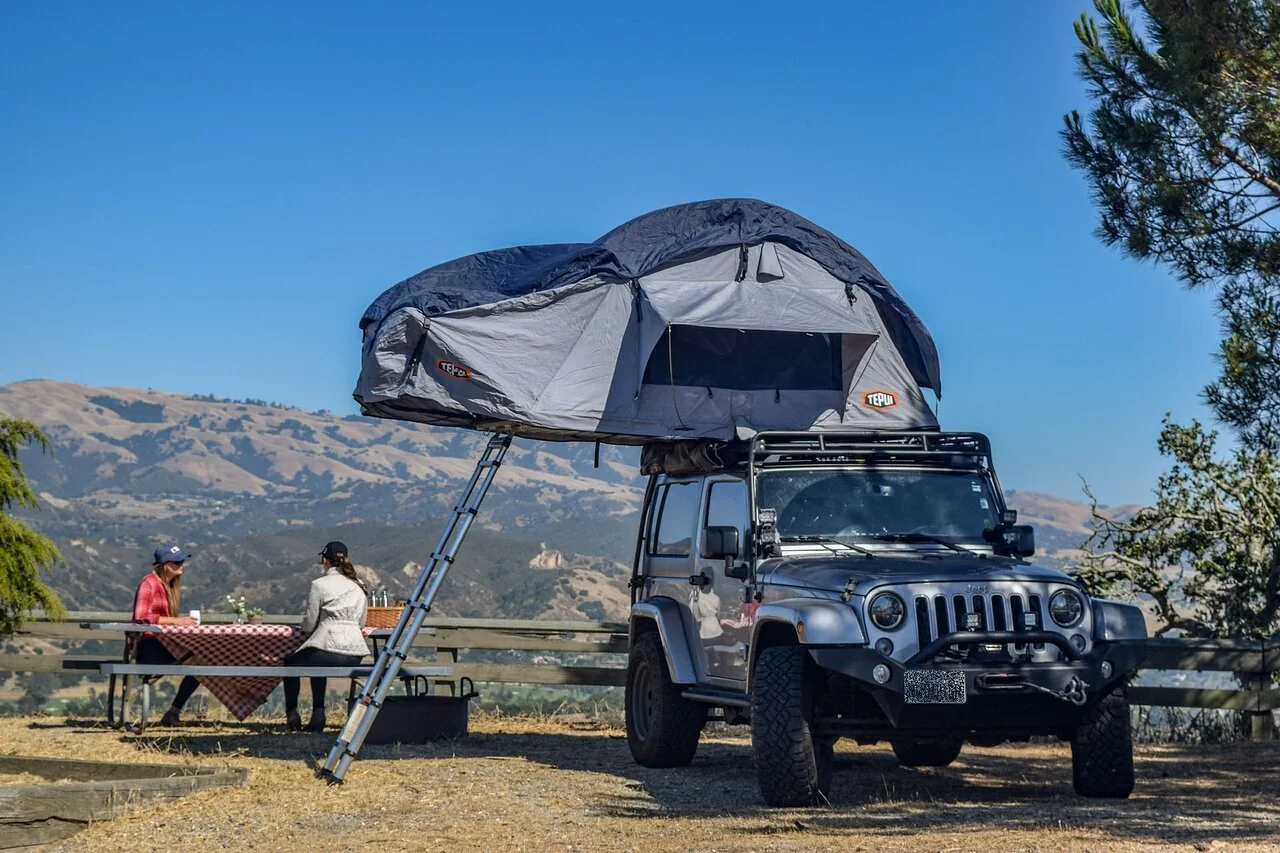Nestled along the iconic Highway 1 between Monterey and San Simeon, Big Sur rests majestically against the dramatic Santa Lucia Range. The region boasts an array of accommodation options, from exclusive private campgrounds and rustic cottages to highly sought-after state park locations that cater to every outdoor enthusiast's preferences. Whether you're seeking full RV facilities, basic tent sites with fire pits, or comfortable tent cabins complete with modern amenities, you'll find your perfect spot. Nature lovers can immerse themselves in ancient Redwood forests or settle beside the gentle murmur of the Big Sur River. The area's natural wonders include the spectacular 80-foot McWay Falls within Julia Pfeiffer Burns State Park and the impressive 60-foot waterfall at Pfeiffer Big Sur State Park. Due to the overwhelming popularity of Big Sur's camping destinations, reservations should be made well ahead - typically half a year in advance for prime locations.
Camping Near Big Sur
Immerse in Big Sur's rugged coastal splendor - where crashing waves sculpt dramatic cliffs, inviting you to embark on an unforgettable outdoor odyssey.
CampChimp is better in the app
Find Available Camping
The 5 best campgrounds near Big Sur, CA
-

Kirk Creek Campground
 Big Sur, CA
Big Sur, CA


Kirk Creek Campground is a stunning campground located in the heart of the Los Padres National Forest offering breathtaking views of the Big Sur coastline and easy access to hiking trails.
-

Pfeiffer Big Sur State Park
 Big Sur, CA
Big Sur, CA


Pfeiffer Big Sur State Park Campground is a popular destination for outdoor enthusiasts featuring stunning redwood forests and easy access to the Big Sur River.
-

Julia Pfeiffer Burns State Park
 Big Sur, CA
Big Sur, CA


Julia Pfeiffer Burns State Park Campground is a secluded campground nestled in a beautiful redwood canyon offering easy access to hiking trails and stunning waterfalls.
-

Limekiln State Park
 Big Sur, CA
Big Sur, CA


Limekiln State Park Campground is a peaceful campground located along the Big Sur coast offering stunning ocean views and easy access to hiking trails and beaches.
-

Andrew Molera State Park
 Big Sur, CA
Big Sur, CA


Andrew Molera State Park Campground is a scenic campground located along the Big Sur River offering easy access to hiking trails and stunning views of the surrounding mountains.
The 5 hardest-to-book campgrounds near Big Sur, CA
The 5 best campgrounds for RV camping near Big Sur, CA
The 5 best campgrounds for tent camping near Big Sur, CA
Camping in Big Sur guide
Pfeiffer Big Sur State Park & Julia Pfeiffer Burns State Park
The enchanting Pfeiffer Falls represents just one of the countless treasures awaiting discovery within Pfeiffer Big Sur State Park. Visitors can explore the majestic Redwood groves and dramatic river canyons through numerous hiking trails, perfect for both daytime adventures and serene sunset walks. The secluded Pfeiffer Beach, accessed via a scenic 2-mile winding road, rewards visitors with fascinating tide pools in its protected cove. At the neighboring Julia Pfeiffer Burns State Park, the celebrated McWay Falls creates a postcard-perfect scene best appreciated from the dedicated McWay Falls Overlook Trail. Camping enthusiasts can choose between the expansive Pfeiffer Big Sur Campground with its 174 diverse sites or opt for a more intimate experience at Julia Pfeiffer Burns Campground's two exclusive walk-in locations.
Andrew Molera State Park
While Andrew Molera State Park doesn't accommodate vehicles or RVs, outdoor enthusiasts will appreciate the short walk to Andrew Molera Trail Camp's collection of 24 tent sites situated in an expansive meadow setting. This strategic camping location serves as an ideal base for exploring the park's extensive trail network. Adventure seekers can embark on journeys along the scenic Bluffs and Panorama Trail or take the Andrew Molera Beach Trail to access pristine beaches and breathtaking coastal vistas.
Ventana Wilderness
Encompassed within Los Padres National Forest, this protected wilderness area showcases over 200 miles of diverse trails. Adventure seekers will encounter an impressive range of landscapes, from lush creek-side paths to challenging ascents along the rugged Santa Lucia mountain ridges. Dedicated backpackers who venture into the remote backcountry are treated to spectacular elevated panoramas. Visitors should come well-prepared for their expedition and stay informed about current fire regulations.
Carmel Valley & Monterey Bay
Venture into this captivating region, where Carmel by the Sea and Monterey Bay present stunning coastal vistas to campers, positioned just 15 miles from the serene Carmel Valley interior. The area offers diverse experiences, from sampling local vintages at numerous tasting rooms to exploring Garland Ranch Regional Park's varied terrain, featuring oak-studded trails and elevated paths overlooking the Monterey Peninsula. The iconic horseshoe-shaped bay's crown jewel, the Monterey Bay Aquarium, provides an educational marine experience.
San Simeon
Known as the southern entrance to the Big Sur region, this charming coastal community features the legendary Hearst Castle, historic Piedras Blancas Light Station, and a fascinating elephant seal rookery where these magnificent marine mammals can be observed throughout the year. The local beaches provide perfect picnicking spots, while the pier offers excellent fishing opportunities for visiting anglers.















